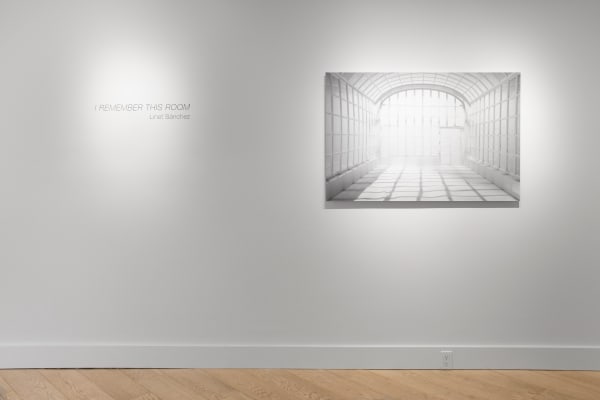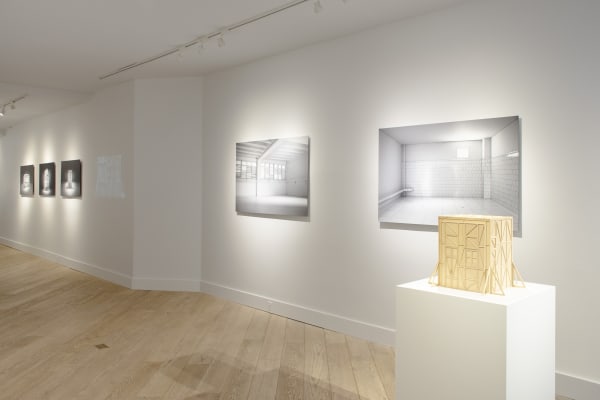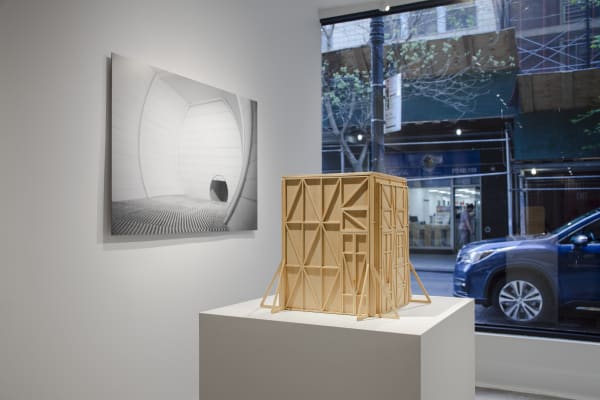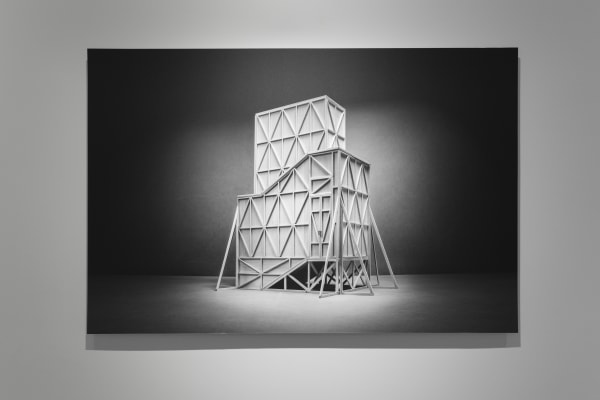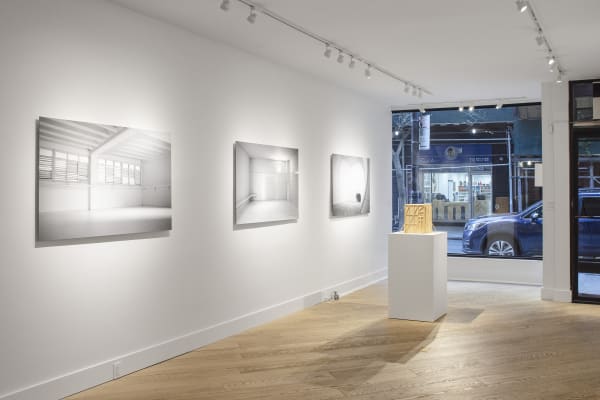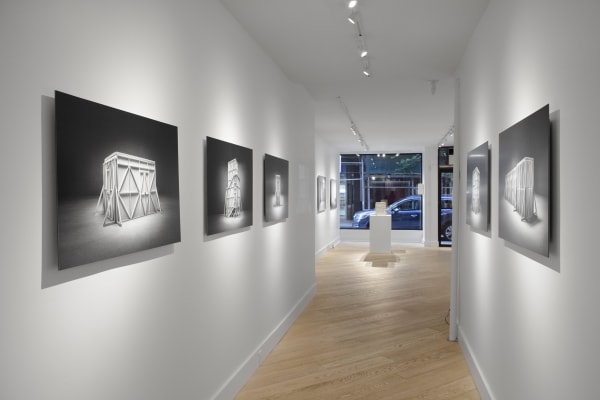I Remember This Room : Linet Sánchez
I still have two memories. My personal one and that of the other I am partly. Or rather, two memories have me. There is an area where they are confused.Jorge Luis Borges, The memory of ShakespeareThe camera is a strange instrument. It demands, first of all, that you see coherently. It makes it possible for you to enter into worlds, and places, and associations that would otherwise be very difficult to do.David Goldblatt
Thomas Nickles Project is pleased to announce the first NYC solo exhibition of Cuban- born artist Linet Sánchez; I Remember this Room is designed as an in-depth journey into the artist’s mind and features images developed between 2013 and 2021. Sánchez, who was trained as a painter and a ballerina before becoming a photographer utilizes miniature architectural models in her work — which the artist constructs meticulously by hand — to explore the intimate relationship between memory, the built environment, and symbolic images: My works — the artist expands — arise from self-absorption, from introspection, rather than from observing what is around me; my images are intended to provoke a state of contemplation. I build spaces first as cardboard models to then be photographed. Her process consists of translating a memory into its materiality and then, its representation — a hybridization that has blurred the line between psyche and photography. Like someone who sees without opening her eyes, Sánchez re-constructs white, empty rooms, compiling her experiences in the form of immobile spaces, fixed in her mind, spaces to return to.
In her earlier works, Sánchez portrays her own psyche in cinematic vignettes of deserted rooms and winding staircases to the unknown. The artist understands this series of large-scale photographs as compilations of her remembered experiences, stripped down to their purest, most monastic state. As the exhibition continues, works from her latest series, including a single-channel video, depict her memories as mysterious stand-alone crates, offering no indication of their contents — embodying the memories that Sánchez is unable to access. About that group of works the artist notes: I am interested in suggesting more than in revealing, to make you think about the interior from its exteriority. In line with my previous research, the represented spaces reconstruct places that connect with personal memories. They work as starting points and do not pretend to be understood literally. The morphology of the spaces refers to the idea of prop, a scenography, a set seen from its exterior where you can only see the structure that supports it. The unrevealed interior of these structures is related to a non-access, to an experience that happens more inside us than outside. Without any training in architecture or model building, Sánchez’s vocation to delve into her past, places us in front of an intimate exercise of extreme detail of someone who constantly questions what to remember, how to remember, assuming her own history as an arbitrary fact.
The artist’s use of fictional miniature spaces, presented as actual objects and (sur)real places, invokes a theme of “the unreliable narrator” and reveals the past as something constructed or modeled, rather than an absolute. The contemplative, quiet nature of these pieces carves out space for self-introspection and, in doing so, alludes to more universal themes of the human condition and our collective search for meaning. A person is a unique and unreproducible collection of qualities, experiences, places, and impulses, a definitive act whose memories are the most efficient act of resistance against death and oblivion. I Remember this Room is all those things, as the artist’s imagery is an act of resistance to forgetting herself. We spend our lives leaving, leaving our father’s house, our mother’s house, our grandparents’ dining rooms, the courtyards of our childhood, hallways and classrooms, others’ beds, offices, we even leave versions of lives we never lived through, we leave our towns, the streets we know, our countries, until we finally leave ourselves. The problem, which seems to be somewhat solved in Sánchez’s work, is not necessarily leaving, it is returning.
Thomas Nickles Project is pleased to announce the first NYC solo exhibition of Cuban-born artist Linet Sánchez; I Remember this Room is designed as an in-depth journey into the artist’s mind and features images developed between 2013 and 2021. Sánchez utilizes miniature architectural models in her work — which the artist constructs meticulously by hand — to explore the intimate relationship between memory, the built environment, and symbolic images.
In her earlier works, Sánchez excavates her own psyche in cinematic vignettes of deserted rooms and winding staircases that lead only to the unknown. The artist understands this series of large-scale photographs as compilations of her remembered experiences. As the exhibition continues, works from her latest series, including a single-channel video, depict her memories as mysterious stand-alone crates, offering no indication of their contents, and embodying the memories that Sanchez is unable to access. The artist’s use of fictional miniature spaces, presented as actual objects and “real” places, invokes a theme of “the unreliable narrator” and reveals the past as something constructed or modeled, rather than an absolute. The artist thus reveals herself as someone constantly questioning what to remember — and how to remember — thereby treating her own history as a kind of arbitrary fact.














